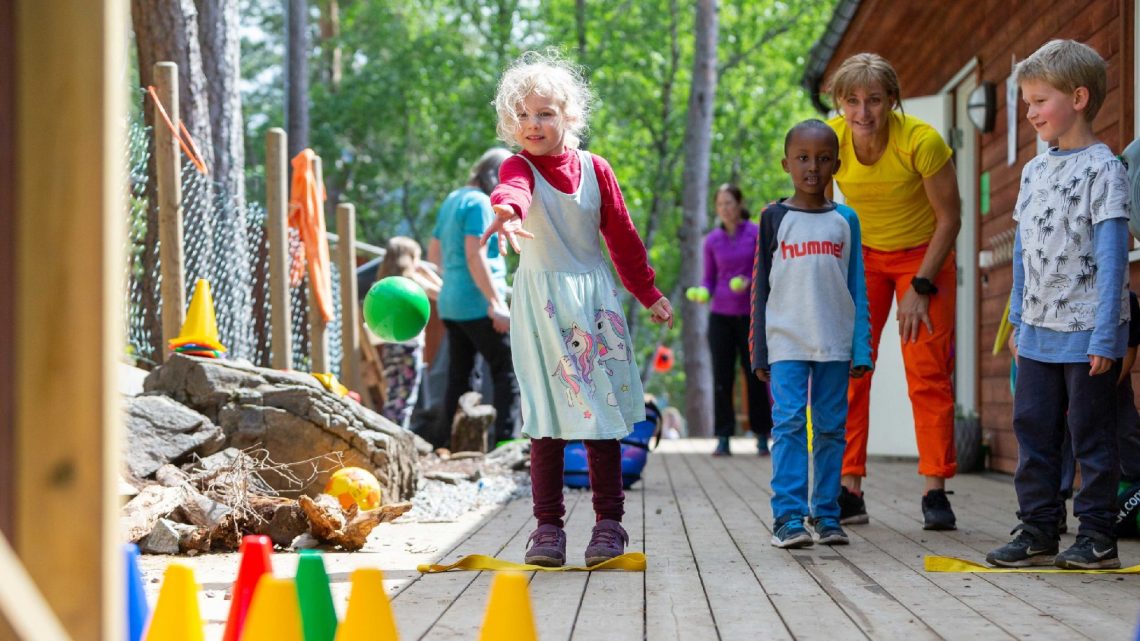
Objective
By adapting various ball stations for throwing and kicking, the children will practice both eye-hand and eye-foot coordination.
Instructions
Divide the rom or outdoor play area into various stations. The children divide themselves among the stations and try out different variations of the exercises, and drift between the stations:
Station 1: The children throw a die and then throw balls at laminated sheets of paper showing the same number or quantity. Preferably, attach the laminated sheets of paper at different heights on the wall.
Station 2: Bowling: Put out cones, bottles or a bowling set. The children throw or kick a ball and watch how many cones/bottles or bowling pins fall over. It is preferable that each child has three goes to try and knock down all the cones/pins.
Station 3: Put out six hula hoops in a row with a bucket/casket/box/hoop at the end. The children throw a die and then jump forwards in the hoop as many times as the numbers of dots on the die. Whilst standing in the hula hoop, they throw a ball/bean bag in the bucket. If the children get a two on the die, they must throw further (from the hula hoops) than if they get a six.
Station 4: The children are in pairs and centre a tennis table for each other with a table tennis bat, cones that are turned upside down or plastic cups. They can bounce or the children can try catching the ball without it bouncing.
Variation
- The activity can be adapted so the children can choose which station they want to be at themselves, and also change stations as and when desired.
- You can change the children’s stations by changing the distance, the type of ball they use, and the size of the goal/target.
Equipment
For example: Dice, hula hoops, bowling pins, bottles, cones, balls, plastic cups, table tennis rackets, frisbees, laminated sheets of paper with different pictures and sizes


